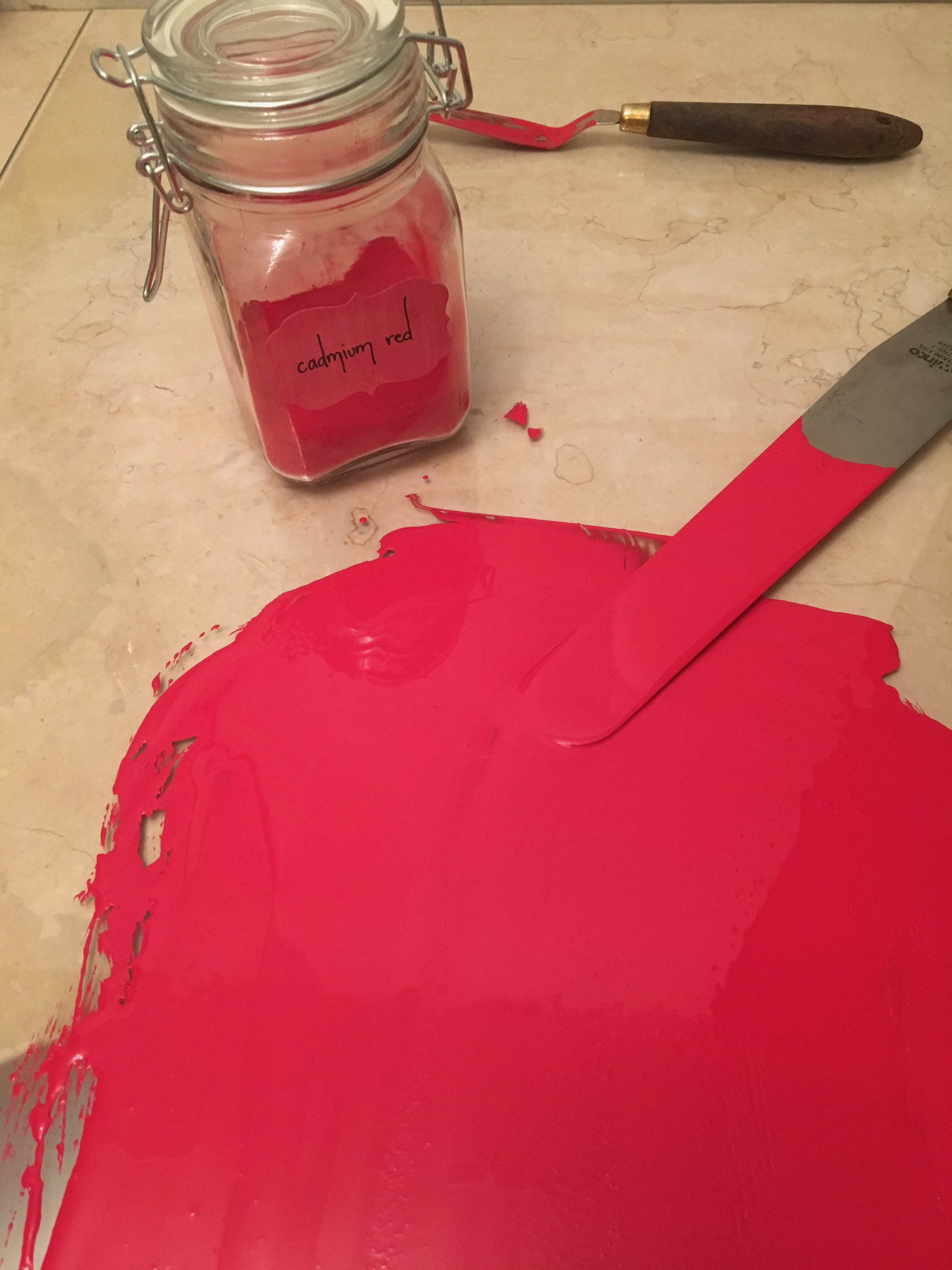Cadmium Red
Cadmium red is an opaque, lightfast, staining, high-tinting paint. On its own, cadmium red light is a stop-you-in-your tracks, bright red, while cadmium red deep heads towards brick/maroon. Handprint describes it as having "an irreplaceable, powdery luster in masstone, and a glowing, fleshy and transparent color in tints.” Because of its opacity and strength, cadmium red can gobble up other paints when you are mixing. The light version produces a bright orange when mixed with benzimida or iso yellow, a matte indigo with ultramarine blue (can similarly dull with other high-tinting brights), and a jewel-tone berry red when cooled with quinacridone magenta.
Chemically, the synthetic inorganic pigment PR108 is cadmium sulfoselenide: a mix of cadmium sulfide (cadmium yellow) and cadmium selenide. See a microscopic view of cadmium red paint.
ATTENTION GETTER
A powerful paint the color of summer tomatoes, iconic lipstick, and London's double decker buses.
CADMIUM RED USAGE
In terms of popular pigments, cadmium red is fairly new. Upon introduction in 1919, a hundred years after cadmium yellow, cadmium red was praised for finally bringing a stable, vibrant red to the artist’s palette. Initially expensive due to the scarcity of cadmium, it had gotten more affordable. Cadmium red is widely used by artists, including:
CADMIUM RED SAFETY
Despite its heavy metal content, cadmium red’s material safety data sheet isn’t that alarming, since pigment production ensures a very low solubility of cadmium and you aren’t interacting with the inhalable powder. It is less toxic than other popular historic reds, with realgar having arsenic, vermilion containing mercury, and minium being a lead-based paint. That said, though the ban of cadmium paint is no longer under debate, we should endeavor to keep it away from our waterways or agriculture. We take extra care to cleanup after painting--particularly with cadmium, cobalt, phthalo, and other heavy metal pigments--including a large sand bucket for rinse water and separate disposal of used paper and cleanup materials. Also, never put artist paints in or on your body or leave them where animals or people could do so.
LEARN MORE ABOUT THE COLOR RED
The Endless Knot's podcast episode covering etymological history and cultural importance of red with a completely non-scandalous discussion of blood, gods, and sex.
Introductions to various red pigments:
Fun facts, color associations, and general overviews of the color red:
GOING OFF ON TANGENTS
Cadmium red, ivory black, titanium white, and yellow ochre make up the “Zorn palette”, a limited set that produces a wide range of colors, particularly useful for portraiture. We can trace a similar palette all the way back to cave paintings, which used red and yellow earths, blacks from hausmannite and soot, and white chalk.
Feel free to send me $500, so I can read I Send You this Cadmium Red - I am so intrigued but the description and reviews!
The word Cadmium derives from Latin cadmia and Greek kadmeia, ancient names for zinc ore discovered near Thebes, a city founded by Phoenician prince Cadmus. Phoenicia means “purple land” in reference to their main export, Tyrian purple, a luxury dye manufactured from sea snails.
Quantum dots, which you might know if you’ve been shopping for a new tv lately, are another application of cadmium selenide.
An article on the difficulty of mixing clean purples (hint: don’t use cadmium red).
The secret behind another famous bright red? Some of it was actually yellow!


